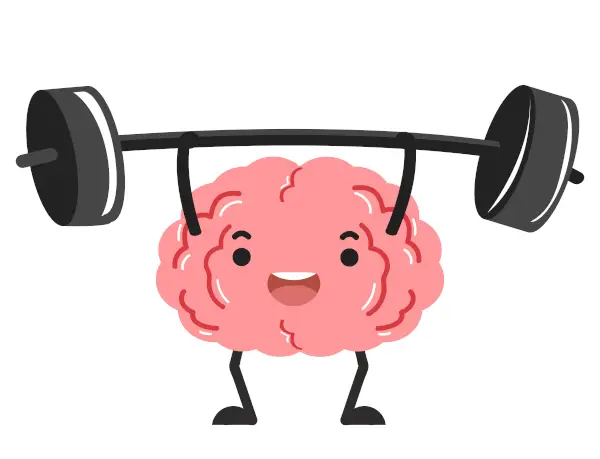What role do affirmations, visualization, and physical embodiment play in goal achievement? What is the relationship between physical actions and mental states, and how can we utilize this understanding for personal growth? What is auto-suggestion, and how does it serve as a fundamental principle in mind-building techniques?
In this article, we try to find answers to these questions by digging into William Walker Atkinson’s book, “Mind Power – The Secret of Mental Magic,” from 1907. Let’s get started!
The Influence of “New Thought” Schools
There have been a lot of interesting experiments that have conclusively shown that intelligent psychological methods like suggestion or auto-suggestion, along with other methods that we will talk about in this lesson, can completely change a person’s nature, disposition, character, and abilities.
People from different sects, cults, and groups from the Great School of “New Thought” have been doing great work in this area for many years. The “affirmations” and “denials” they employed really caused their brain centers to expand or contract, enhancing the development of their desired traits while limiting the expression of their unwanted ones.
Beyond Affirmations: Visualization and Action
However, “affirmations,” “auto-suggestions,” or even strong, positive suggestions from others only constitute a third of the effort required to achieve optimal results. Declaring that one is “I am Brave,” “I am Industrious,” “I am Active,” and so on is fine, but if one stops there, only one-third of the task is completed.
It is undeniable that these auto-suggestions and affirmations help to strengthen mental skills and brain centers, and they are essential for character development. However, to work as effectively as possible, visualization and some sort of physical embodiment of the mental affirmations or suggestions are required. In addition to talking, there must also be seeing and doing.
The Mental Suggestion lesson discussed how “mental states take form in physical action” and, conversely, how “physical action produces mental states.” Both cases include action and reaction. For example, if you start to feel angry and keep it up for a while (even though the feeling is faked for the experiment), your brows will frown, your hands will get tense, and your jaws will tighten together in an aggressive “bite.” Of course, you already know this is true.
Find many free books at our “Free New Thought Library“ – Opens in new tab

The Interplay of Physical and Mental States
However, if you adopt the aforementioned physical traits of anger and maintain them sincerely for a short period of time, you will discover that you are truly experiencing anger. The same is true for pleasure-related emotions and behaviors. Think of anything pleasurable, and your face will break into a smile, your eyes will twinkle, and you will have all of the outward signs of pleasure.
On the other hand, you will quickly start to feel “bright, cheerful, and happy” if you “throw yourself into the part,” smile, and show all the outward signs of happiness.
People’s emotional states can instantly change when they see a sign with the simple phrase “smile!” written in large letters. They’d follow the advice, and they’d start to smile because they found the sign amusing. The smile would then have an effect on their minds, making them “feel good,” and so on.
Trying, for a short period of time, to bring any specific emotion or experience into physical form without the accompanying mental state also showing up can be difficult for anyone. Enter a business setting and demonstrate your good nature, confidence, independence, and so on. Not only will you impress others, but you will also impress yourself, and you will begin to feel the emotions you have been expressing.
Enter the same space where you appear to be failing, insecure, afraid, etc., and you will not only find that others will adopt your suggestions, but you will also become more immersed in the frame of mind that you are projecting.
By methodically and consistently “acting out” the role, people can develop a skilled, self-assured, and dependent personality. Their “second nature,” once acquired, may become stronger than their initial nature. Using the faculty in this way led to the proper development of brain cells and a true transformation of individuals. There are men who, when feeling “blue” or “discouraged,” consistently force a smile on their faces, and in a short time, they regain their accustomed or desired cheerful state.

Character Development Through Action
Using appropriate methods, you can shape your character at will. However, it takes more than just “holding the thought” to do this; one must learn to act out the desired role until it becomes second nature.
One might wonder how many individuals will realize the wonderful field opened up for them if they follow this idea. How many will grasp that herein lies the “Secret of Making Yourselves Over?” One might wish to fairly emphasize this truth.
After thinking about how many of you are now and what you could be if you understood the deep truth and importance of what was said, there’s a strong desire to print the story in big, black-faced type and capital letters, just to make sure it gets read.
The facts and principles stated above seem self-evident and require little or no backing up by authorities. However, a quotation or two may help to reinforce the idea in your mind.
According to Prof. Halleck, “By restraining the expression of an emotion, we can frequently throttle it; by inducing an expression, we can often cause its allied would comemotion.”
It would be ideal if everyone of you memorized the preceding words; they are truly priceless. Prof. Halleck, of course, refers to the physical manifestation or expression—the physical action that results from emotion.
Related reading: The Emotion-Manifestation Equation: Attract Your Dreams by Aligning Your Feelings – Opens in new tab
Prof. William James says something similar: “If you refuse to express a passion, it dies. Count 10 before expressing your rage, and the situation becomes silly. Whistling to maintain courage is not a figurative expression. Conversely, if you spend the entire day in a depressed posture, sigh, and respond to everything in an unhappy tone, your depression will stick around.
As everyone who has been through it knows, this is the most important moral lesson: if we want to change bad emotional tendencies in ourselves, we must first and foremost assiduously and coldly go through the outward movements of the opposite traits we want to bring about.
Smooth the face, brighten the eye, tighten the dorsal rather than the ventral part of the frame, speak in a major key, and pass the friendly praise. If your heart doesn’t slowly melt, you must really be frigid.” Aren’t those beautiful words? Read them numerous times to ensure that you understand the whole meaning!
In order to develop a quality that you are lacking, you have to think about it, dream about it, focus on it, and live it out in your mind as a “daydream” or “mental picture”—keep the mental image of it close at hand. Finally, and perhaps most importantly, act out its physical manifestations—play the role. Play your part with sincerity, passion, constancy, eagerness, and steadiness.
Conversely, cultivating the opposite quality is a simple way to suppress a trait, causing the unwanted one to become “crowded out.” If you want to get rid of darkness in a room, you don’t need to shovel it out; simply open the windows and “let a little sunshine in.”
It’s a psychological law. Develop the positive to drive away the negative. That is the rule! But don’t forget to perform your part!

The Power of Auto-Suggestion
Auto-suggestion, often known as self-suggestion, is one of the most active mind-building agencies. Auto-suggestion is the fundamental idea behind all “self-impression” techniques and encompasses a variety of affirmations, denials, statements, and other techniques used by the various “New Thought” schools.
“Self-impression” would be a better name than any of these terms because it describes the process perfectly. A person “impresses” his mind with particular ideas, suggestions, emotions, and mental states. The ability to perform two roles simultaneously is known as the dual aspect of the mind. These roles are those of scholar or student and teacher or master.
One can charge his mind with the goal of waking up at a specific hour in the morning, and he does. Or perhaps he charges his mind to remember a particular thing, and he does. One can go very far with this type of self-mastery. They can instruct their mind to gather information about certain topics from their random mental collections of knowledge, and then they can request their mind to put that information into a structured form. Their minds will do this, and the structured form of information will be available when they need it.
So, this auto-suggestion is an example of “says I to myself, says I.” And the strange thing is, your mind will take the imprint and act upon it if you can impress it strongly enough, repeatedly enough, and sufficiently.
Related reading: Harnessing Affirmations for Manifestation: Your Key to Law of Attraction Success –Opens in new tab
The Role of Repetition
Repetition is beneficial for autosuggestion. You may remember the story of the man who lied so much that he started to believe it himself. Repeated auto-suggestion works in the same way. When the mind hears something repeatedly, it begins to believe it and behaves accordingly. Constant statements and affirmations made to oneself will lead to real-life results.
Many people have improved their physical and mental health through the diligent, consistent practice of auto-suggestion. You can get a better result if you mix the mental picture or visualization process with auto-suggestion. In addition to these two, when a person practices playing out the part physically, he will reap a tenfold harvest of benefits. These three forms, when combined and practiced consistently, may perform wonders for anyone.
For example, if one suffers from fear when meeting other people, the first thing he should do is support himself with constant affirmations or auto-suggestions of “fearlessness”; following that, he should visualize himself as absolutely fearless; and finally, he should try to reproduce the fearless man’s physical appearance and outward behavior (acting out the part). And in this way, he will gradually become what he wants to be.
Check out our recommendations at “Mind Training Bookshelf” and many free resources at our “Free Library“

His ideal becomes a reality; his dream becomes a reality; his emotions become actions; and his acts become feelings. In the same way, this rule and example will work for all kinds of personal characteristics or abilities. The same concept applies to all situations. If you understand the idea, you will know the entire secret.
Here, we propose a small modification based on auto-suggestion that works wonderfully in this category of cases. The typical auto-suggestion or affirmation goes like this: “I am fearless—I fear nothing—I am courageous—I am filled with confidence,” and so on.
Without a doubt, anyone who knows anything about this subject will agree that a person who “holds the thought” that “I am fearless” will be brave and show the traits that he claims for himself. For countless individuals, the time-tested and regularly taught technique of affirmation or autosuggestion has proven to be incredibly effective.
And I strongly urge you to follow this approach of “keeping the thought and uttering affirmations or auto-suggestions in the first person as you proceed into action.” It is unparalleled as a “bracer.” But there is something more that is not so old, and it is right here.
Treating Oneself: A New Approach
Imagine yourself as a distinct person; say “John Smith” (or whatever your name is), and treat him as such, just like a patient.
Let’s say you want to develop fearlessness instead of the fear that has been bothering you so much. In addition to visualizing the scene and playing it out over and over again, you should try auto-suggestion. Using the old method, you would tell yourself things like, “I am fearless,” etc. Now, my new method of “treating” yourself is to pretend that you are “treating” someone else for the same problem.
Take a seat and provide the usual treatment. Imagine yourself sitting in front of your personality, with the central mind treating the “John Smith” portion of you and the individual “treating” the personality.
The individual (which is you) communicates with the personality of “John Smith” as follows: “John Smith, strengthen your courage and act better. You are fearless, Fearless! I tell you, you’re courageous! You’re daring, brave, and bold! You radiate confidence and self-reliance! You have no fear! Your mind is full of powerful, constructive energy, and you will use it to realize your goals. Your optimism will increase daily! Do you hear me? You’re positive right now. Positive at this precise moment! Right now, you’re optimistic, brave, self-assured, and independent, and you will become more and more of that each day. Remember that you are positive, positive, positive-fearless, fearless, fearless!” etc., etc.
You will discover that by following this strategy, you can fairly pour in positive suggestions to “the John Smith part of you,” and that part of you will accept it as though there were two people instead of one. And there are two individuals, according to occult teachings: the individual and the personality.

Advantages Over Traditional Methods
This strategy will provide a welcome break from the tedious “I am this, and I am that” techniques that have driven so many former “New Thought” adherents to abandon the entire concept in disgust. Many good people have gotten tired of saying “I am this and that” over and over again, giving up just as they were getting close to reaching their goal.
The advice to these people, as well as to everyone else, is to “Try this new plan!”Learn to “treat yourself” with this strategy, and you will be shocked at how quickly you will make improvements when compared to the previous plan. However, implant in the “John Smith” part of yourself the idea that he must maintain the mental image or visualization, and immediately begin performing the role! Maintain a firm stance on this matter; insist on it, cross-examine him regarding it before each treatment, and forcefully impress it upon him.
Try this method out for yourself now, and see what great things it can do. Do not take my word for it; instead, verify it for yourself. When you realize how beneficial this approach is, you will wonder why you hadn’t thought of it before. You’ll develop an individuality that will acknowledge the personality as malleable, something you can shape and mold with this “treatment.”
Best of all, you will realize that the individual is you, and you are the individual, and that the personality is just something that “belongs to you.” At this point, you will have gathered the powers of the endless mind-power, and you will be able to identify yourself as “positive” and an “active center of power” within the vast ocean of mind-power. And all of this will have been caused by the new plan of “says I to myself, says I.” Is it not “worthwhile?” Then begin the “make yourself over as you will!” process.
Check out our recommendations at “Mind Training Bookshelf” and many free resources at our “Free Library“
♦ If this article resonates with you, please join our newsletter by using the forms on this website so we can stay in touch.
Stay in Touch
 Join our newsletter by using the forms on this website or click here!
Join our newsletter by using the forms on this website or click here! Follow us on Google News
Follow us on Google News Follow us on Facebook
Follow us on Facebook
Featured image by Gerd Altmann from Pixabay







